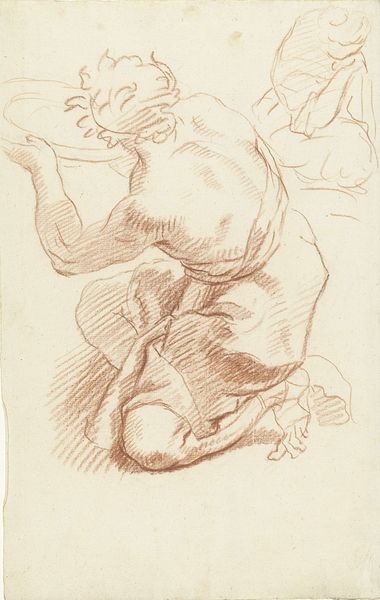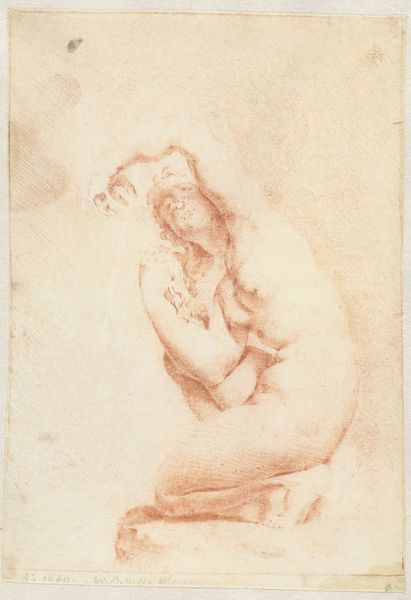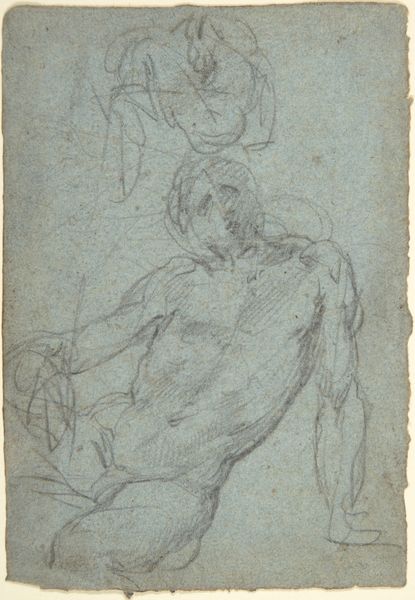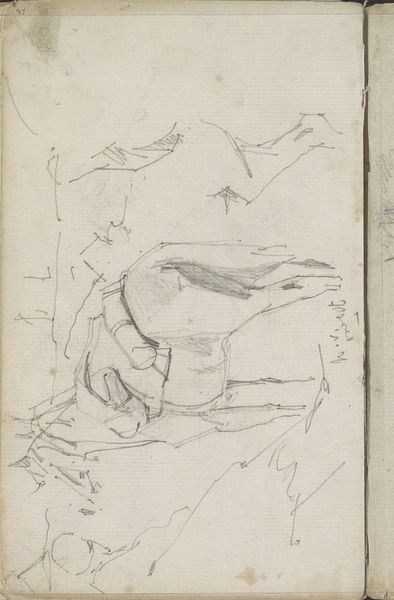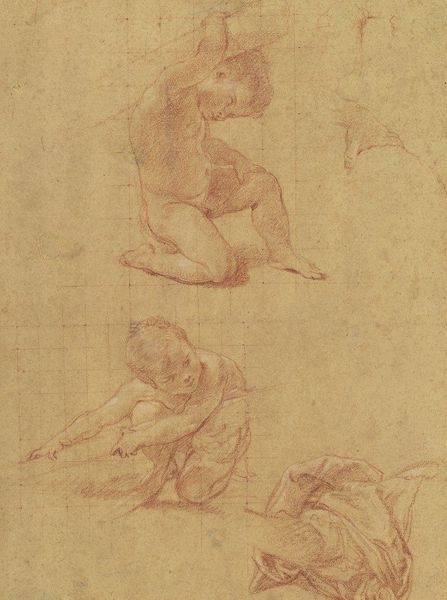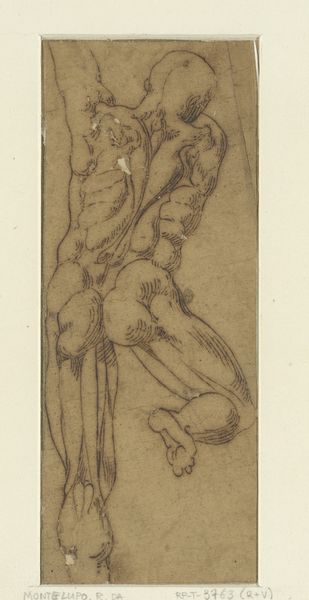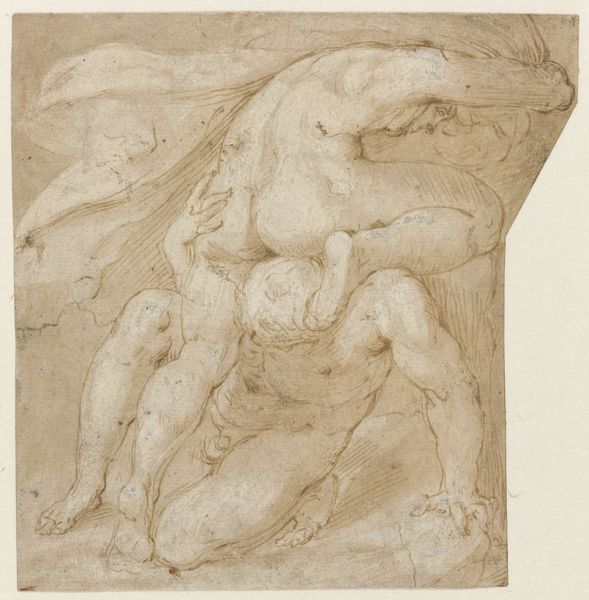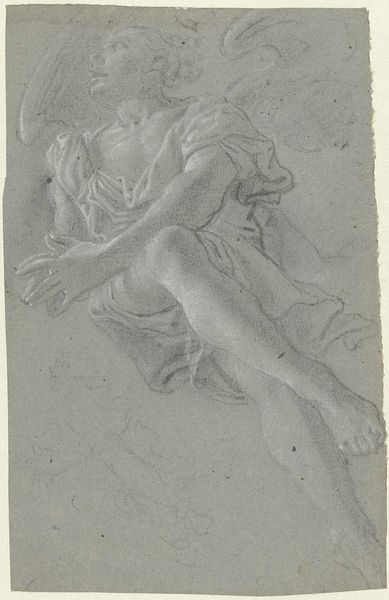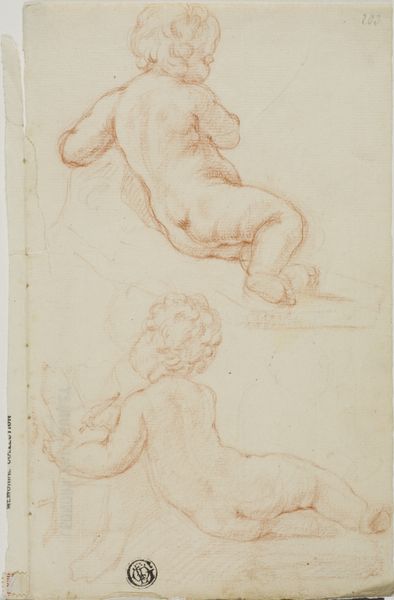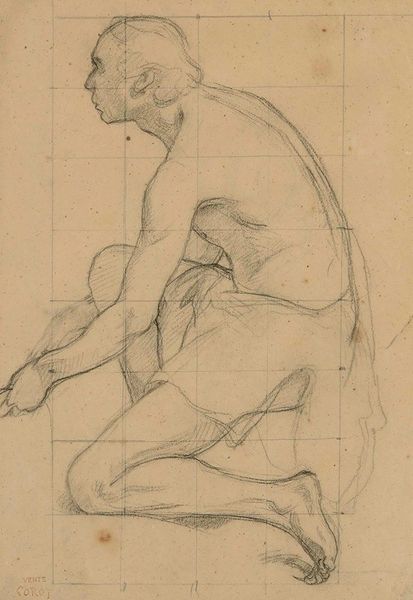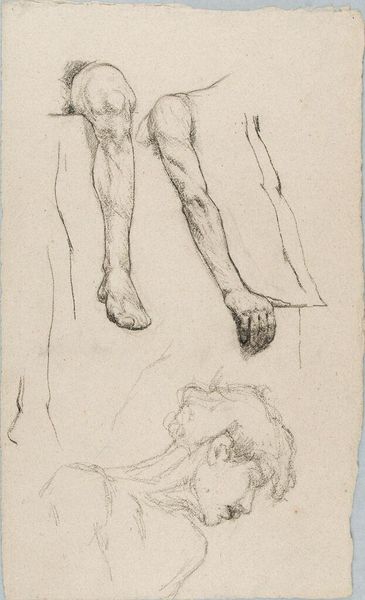
drawing, print, paper, graphite
#
portrait
#
drawing
# print
#
charcoal drawing
#
figuration
#
paper
#
graphite
#
history-painting
#
academic-art
#
nude
Dimensions: 117 × 74 mm
Copyright: Public Domain
Curator: Here we have “Two Struggling Figures,” a graphite drawing made circa 1867, by Michelangelo, now at the Art Institute of Chicago. Editor: It feels immediate, almost like catching a fleeting moment. The lines are tentative, searching. What is going on with the bodies? It's unbalanced, fraught with tension. Curator: Consider the formal composition, the academic-art approach of laying down tentative lines in order to create figures of such intense emotion. The figures are unfinished, their outlines incomplete. Look at the one whose back is to us, carrying what seems to be the other’s weight. Editor: Indeed. The bodies’ musculature feels secondary to the palpable struggle represented by the tentative lines, as if any definite form might break the delicate emotional tension in this artwork. In terms of power dynamics, it evokes images of oppression. Curator: This work comes from a rich history of the public function of art. We must not ignore Michelangelo’s intention: to create drawings for grand history paintings, often heroic narratives meant to edify the public through example. Editor: I acknowledge that this might be part of Michelangelo's preparatory practice, but these intertwined nudes evoke themes such as sacrifice and endurance rather than triumph or heroism. In that way it invites reflection on how power operates within societal contexts, far from traditional idealization. Curator: You suggest the image, rather than being academic art that merely copies and reinforces tradition, destabilizes preconceived notions regarding gender roles or status dynamics. Its suggestive, ethereal forms question power structures. Editor: Ultimately, it offers us space to confront these notions head-on through visual expression rather than simply accepting or rejecting historical interpretations. What remains most interesting, as always, is just that play. Curator: Very insightful—focusing less on definite stories and focusing more on emotional dynamics as revealed in formal gestures seems correct. Editor: It gives us a lot to consider about drawing's power, beyond representation.
Comments
No comments
Be the first to comment and join the conversation on the ultimate creative platform.
